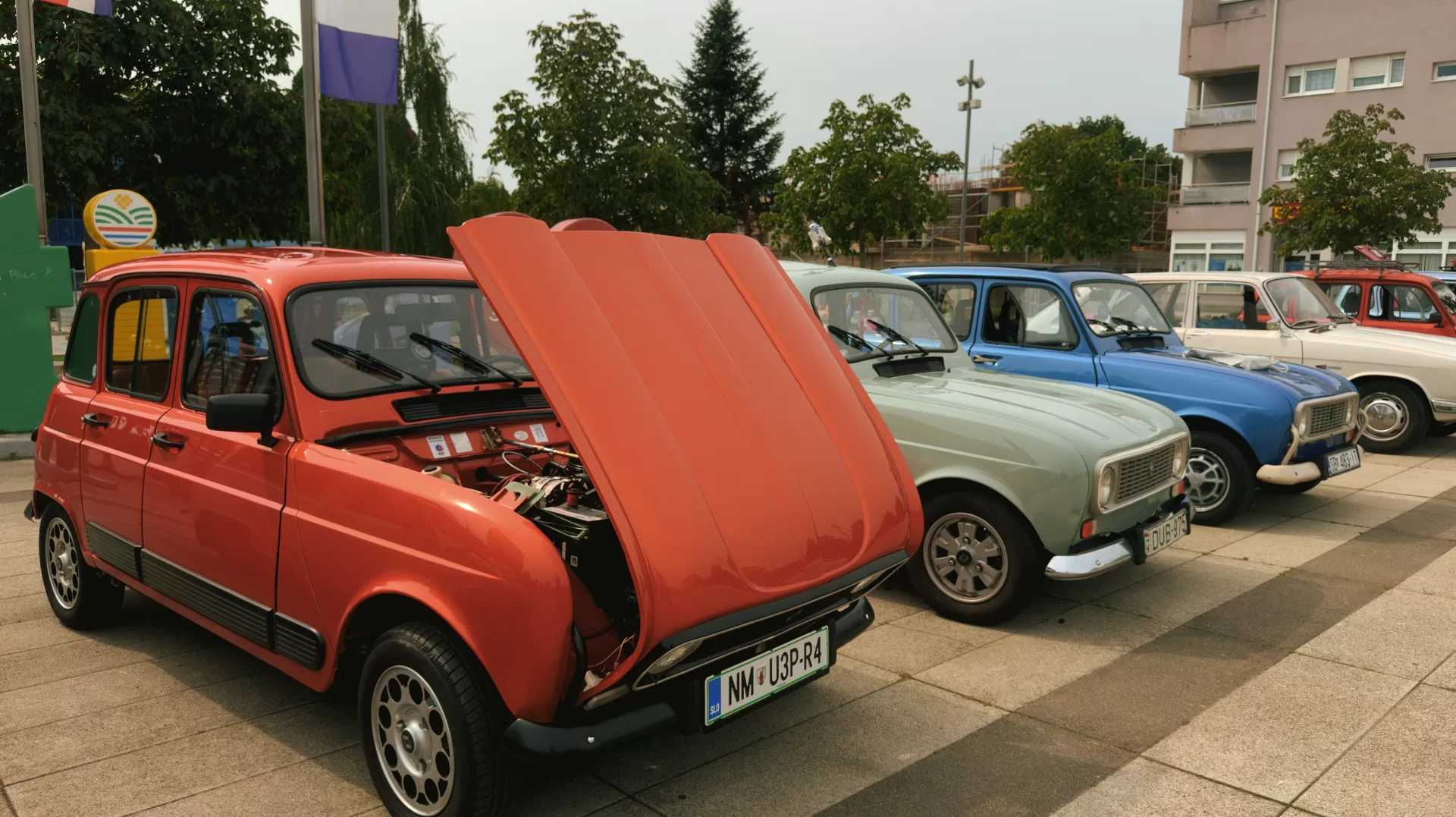
Renault 4: perfecting the cheap small car
Going to see family that lives far away can some times bring with it unexpected benefits. One such trip helped me understand what makes the Renault 4, a car I’ve never really cared much about, a great machine worthy of respect.
The Renault 4 is an excellent example of a car not trying too hard to be good, simply because it didn’t need to. Created to compete with the immensely popular Citroen 2CV, the car that mobilised France after the Second World War, the Renault beat the 2CV it at its own game. Like the Mini, Beetle, or Fiat 500, it was humble, clever, and unpretentious. That’s why millions survive today, and why the 4 is still the best-selling French car in history.
Around a dozen of them gathered in Kutina in September, bringing a splash of colour to an otherwise gray early September day. Blues, oranges, reds and an occasional white and cream Renault 4s were a great sight to see, as these cars were one of the most popular not just in France, but in former Yugoslavia as well.
Around 575,000 Renault 4s were built in Slovenia, a part of Yugoslavia, between 1973 and 1994. This made them a direct competitor to the Yugo and Zastava models that were mostly found on the Yugoslav roads. Contrary to the Yugos and other Eastern Bloc cars, the 4 was a proper cruiser. It was not fast by any means; the fastest versions had less than 40 horsepower, but was reliable enough, more than comfortable and spacious to make it the go-to car for thousands.
The cars on display in Kutina reflected that spirit. A concours-level restoration sat in the middle of the pack, flanked by weird and wonderful examples that were both better and worse, depending how you look at it. One I found very interesting was an off-road assistance vehicle conversion inspired by the historic rallies of the past century. The panel van had stickers ranging from Paris-Dakar to the Monaco Rally and the 1000 Miglia, despite not being even close to any of those in its life.
The 4 actually did take part in the Paris Dakar Rally in 1979 and 1980, and had success!
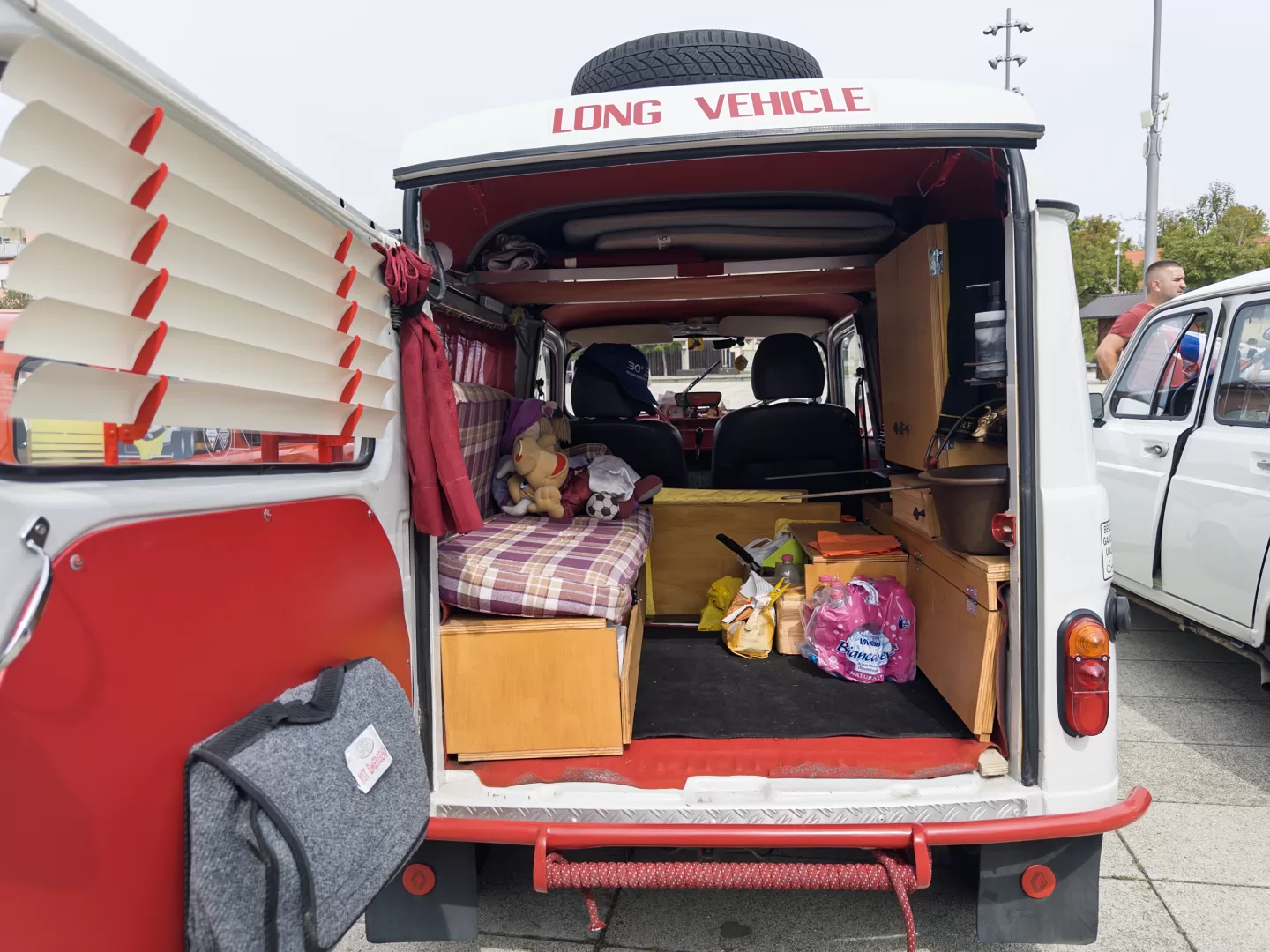
The “Long Vehicle” sticker is just perfect for this car.
These cars were the workhorses for French tradesmen, delivery drivers and many other users, including service crews for offroad events, ambulances and more. Looking at it I understood why so many small businesses still choose the French small cars such as the Kangoo or the Berlingo instead of vans: sometimes, a car with a big box behind you will give you all the space you need. It’s clear that the inspiration for the modern-day Kangoo came from the Renault 4.
Another interesting touch is that my father-in-law, who lives in Kutina, used to drive a Kangoo, and I was looking at the great-grandfather of the Kangoo in Kutina!
Concours-level beauty
A particular orange example, immaculately restored in its birthplace, caught my eye the most. The restored Renault 4 had bright metallic orange paint and looked perhaps even better than it did when it left the factory in Slovenia. It was, of course, driven by a Slovenian gentleman who also restores these cars, proving that the best advert for your work is to actually have it around all of the time.
The 4 is known for its strange shifter, which is mounted on the column but is a manual, meaning that it shifts gears just like a “normal” car, but the shift lever actually goes across the engine and connects with the gearbox just ahead of the radiator.
This was done to save space in the interior, and make the overall system much more simple: it’s just a lever that connects to another lever and then to the gearbox. Interestingly, the lever goes through a small circular joint which is completely exposed and lubricated with grease to make it smooth. No fancy plastics or covers here.
Seeing it in person is quite a sight, but knowing the reasoning behind it is very interesting, and very French.
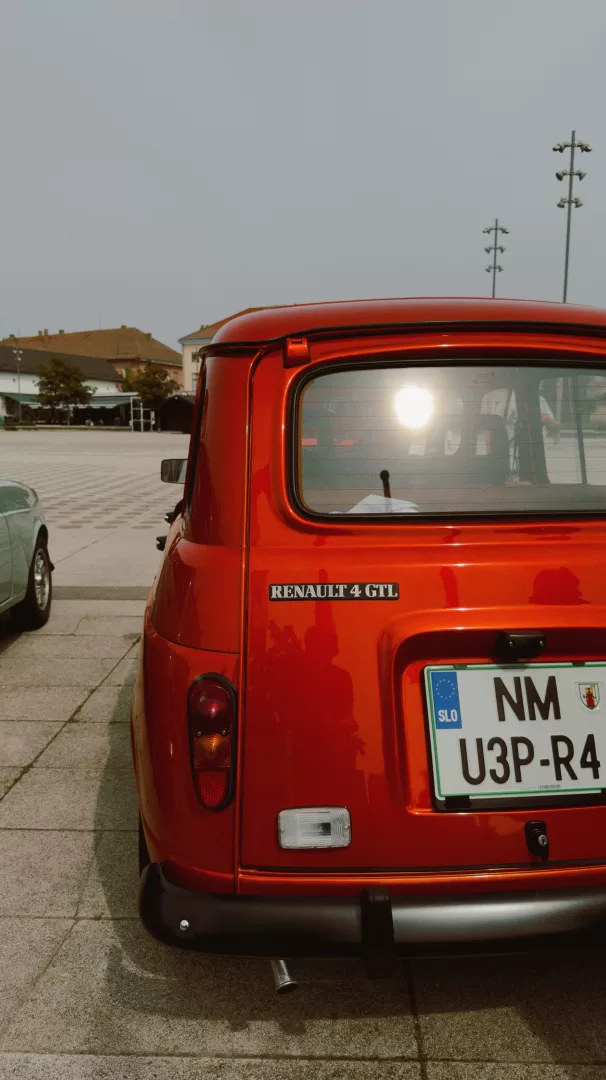
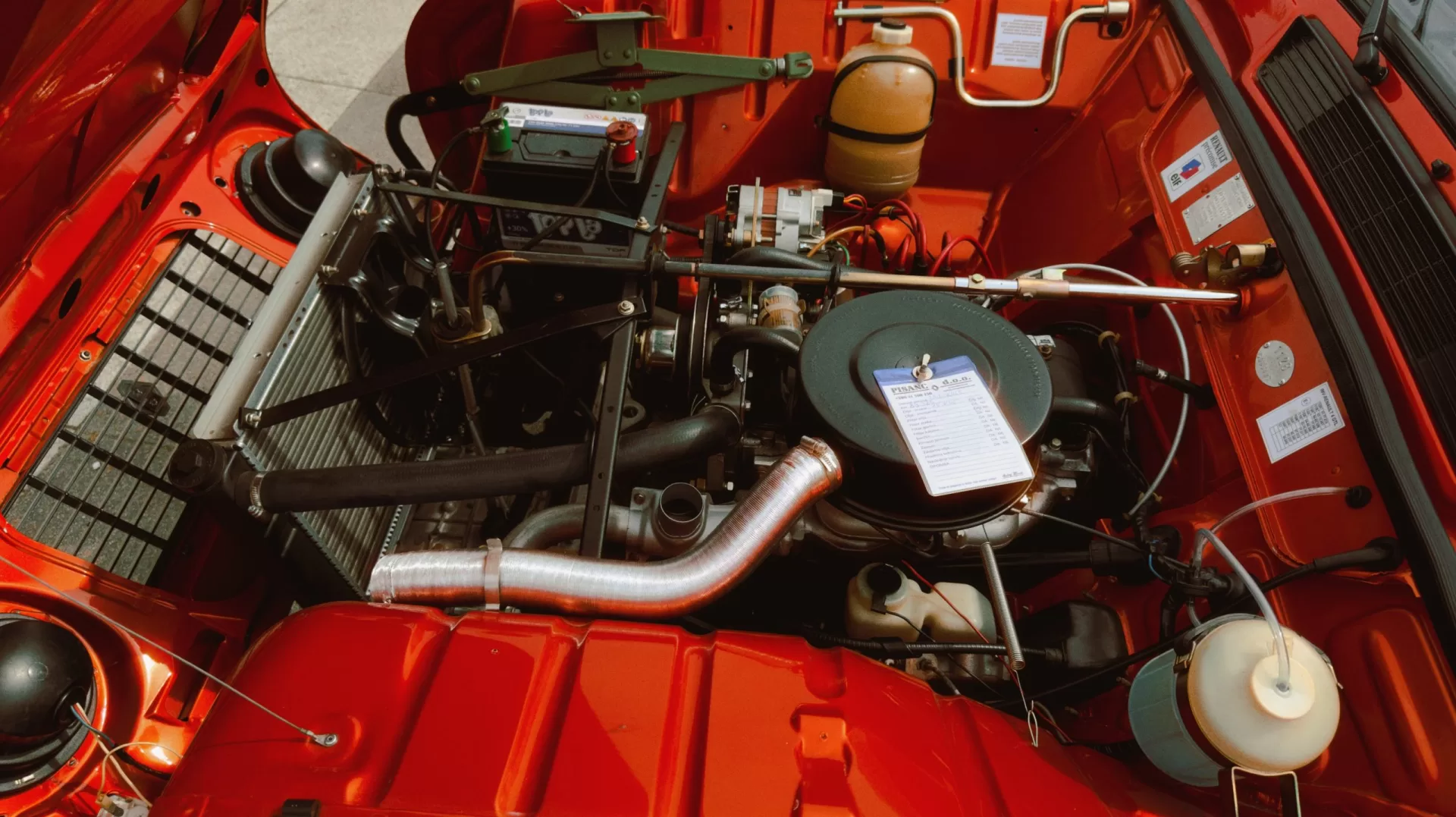
The restored 4 had all period-correct parts and looked shinier than many new cars around; properly restored to a concours-level quality.
One of the better examples was this deep blue car, which had the familiar front bars protruding from the bumper and disappearing into the body. The bars were usually both a design and practical element, providing a bit of visual drama to the front while shielding the bodywork from low speed bumps and scratches.
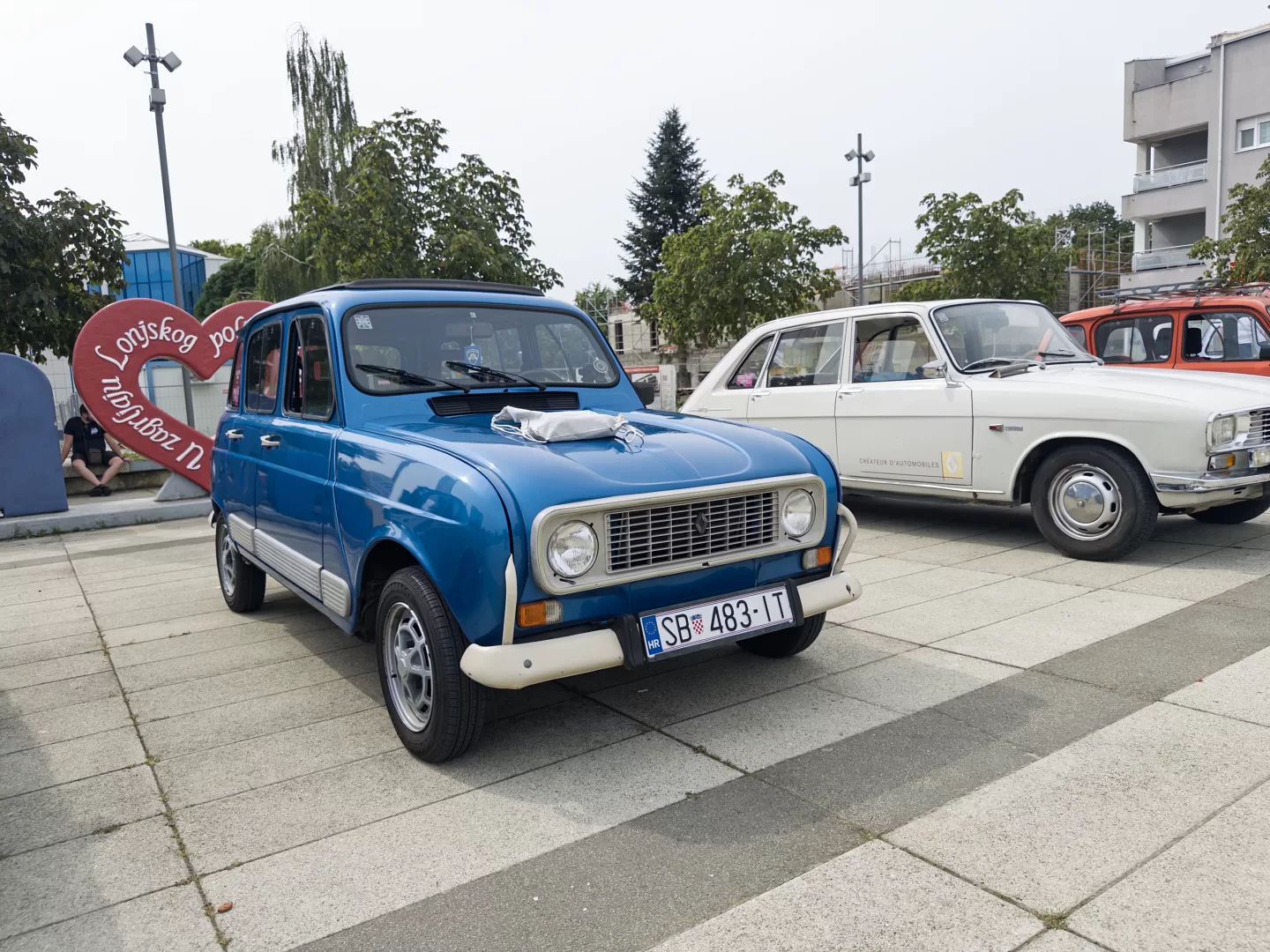
This car also had the rare fabric option, which covered almost the entire lenght of the roof, similar to the way the Fiat 500 had its fabric roof to save weight.
The fabric roof provides another interesting design element and additional airflow in a car whose windows do not roll down but instead slide backwards like on a counter in your local government office.
This was, of course, done to save weight and cost.
While definitely not the car I’d be interested in owning one day, the quirks and character of these small hatchbacks make them some of the most interesting small cars you can find today. They’re also incredibly cheap, easy to own and maintain, and are a great gateway into classic car ownership if you do not desire relatively modern amenities such as speed and performance.
I went to see family and ended up with a new appreciation for a car that was loved by millions. Not a bad Sunday.
